Back in February I was invited to give a lecture on Vivien Leigh for a symposium highlighting the recently acquired Vivien Leigh Archive at the Victoria and Albert Museum in London. Curators Keith Lodwick and Kate Dorney spoke about censorship and A Streetcar Named Desire, and scholar/author Helen Taylor gave a wonderful presentation on the associations between Vivien and Scarlett O’Hara. I was asked to present on the evolution of Vivien’s screen image, and therefore did more of a survey of her entire film career.
The technician at the V&A supposedly recorded the entire symposium, but it hasn’t appeared online as yet, so I thought I’d post the text for my segment here. I hope you find it informative!
*Note: There were more clips in my presentation but they’ve been replaced here with screencaps.
Vivien Leigh: Stardom and Screen Image
Written and presented by Kendra Bean
Vivien Leigh: Scarlett, Streetcar, Struggle and Success
V&A, London, February 2014
In 1966, actress Paula Laurence played Zinaida in Vivien Leigh’s final play, Ivanov. Two years later, after Vivien had died, Laurence published a memorial tribute to her late friend and colleague, in which she wrote the following:
“For me, Vivien’s acting on the stage was too rigid, too meticulous. She had figured out what was best for her and she stuck to it. Having learned all her lines before the first rehearsal, she never varied a reading of them nor an accompanying gesture. She was like the most exquisite and expensive watch in the world – everything ticked and everything was accurate but it was never thrilling, not to me. Nor was it ever as exciting or volatile as she was off-stage…However, I thought her film acting superb. She was an uncanny listener in life and this truly hearing and reacting to what she heard was magnificently captured on-screen. Her extraordinary beauty, almost too fragile and delicate for the stage, was made for films.”
Laurence wrote these words with heartfelt honesty, rather than the intent to offend. And she wasn’t alone in her opinion. Many of Vivien’s actor friends expressed similar sentiments, particularly during the years of her partnership with Laurence Olivier, whose shadow seemed overwhelming. Speaking for myself, I never had the opportunity to see Vivien perform on stage and so can’t pass judgement on her skills as a theatrical performer. But I do know that audiences packed in to see her, regardless of how old she was, what role she played, or where she was performing. She had star quality in abundance, and what came across on stage was magnified on the screen.
Today I’m going to talk about Vivien Leigh the film star. I’m aware that she would probably hate that. She spent much of her career rejecting that very label and replacing it with “actress.” So I’ll say this: Vivien was an actress – a hard-working and popular one – but she was also many other things: wife, mother, cat lady, art lover, fantastic letter writer, and yes, film star. It wasn’t the term itself that repelled her, but rather the connotations that went with it, namely typecasting and lack of control over one’s career choices.
But what does being a star even mean? After all, there were plenty of people working in the movies in Vivien’s day who couldn’t actually claim that title. In 1958, Vivien and critic Kenneth Tynan tried to tackle this very question in an interview with American broadcaster Edward R. Murrow:
Clip starts at 6.13
So who was right? It turns out they both were, kind of. Film historian Jeanine Basinger, author of the amazingly insightful book The Star Machine, described it best: “It’s a crackpot business that sets out to manufacture a product it can’t even define, but that was old Hollywood. Thousands of people in the movie business made a Wizard of Oz living, working hidden levers to present an awe-inspiring display on theatre screens: Movie Stars! Hollywood made ‘em and sold ‘em daily, gamely producing a result for which its creators had no concrete explanation.” And seeing as Hollywood cinema dominated the global market during the interwar years, it made sense that producers in Britain would try to duplicate Hollywood’s business practices.
The most successful person to do so was Hungarian producer Alexander Korda, who built a self-contained film studio at Denham where he kept a roster of potential stars under contract, and relied on his distribution deal with United Artists to package them and ship them overseas. Korda played a huge role in shaping Vivien’s career. Furthermore, he became a personal friend, and she would later describe him as being one of the two most influential men in her life (the other was Laurence Olivier).
Before Korda got a hold of her, however, there were a few other people who laid claim to having discovered Vivien. In 1934, she managed to get herself an uncredited walk-on role in the Cicely Courtniedge film Things Are Looking Up. This is kind of a random comparison but she reminds me of Jerry Maren in The Wizard of Oz.
The Lillipop Guild
Maren was hired as one of the three munchkins that made up the Lollipop Guild, and Victor Fleming (who ended up leaving Oz to direct Gone With the Wind) apparently took a shine to him. After presenting Judy Garland with a giant lollipop, Maren proceeds to appear at the front of nearly every crowd shot in Munchkin Land and you can’t help but notice him in his bright green trousers. Vivien Leigh is the Jerry Maren of Things Are Looking Up, or at in least the group publicity photos that were used to promote the film.
Vivian Holman in Things Are Looking Up (1935)
The camera obviously recognized something unique, and so did director Albert de Courville, who gave her a line of dialogue.
After completing work on Things Are Looking Up, she signed with independent agent John Gliddon, who set her star trajectory in motion. According to Gliddon, Vivien’s star quality was evident from the moment she walked into his Regent Street office. “It was not only the loveliness of her face,” he said, “but the magnetism of her personality that impressed me. She had poise and grace, and her clothes were perfect in their expensive simplicity.” These very traits — beauty, charm, a ladylike manner and glamour and fashion sense — formed the foundation of Vivien’s star image. No matter what roles she played throughout her career, these characteristics were always present to some degree.
The first thing Gliddon did was change Vivien’s name. Stars were marketable commodities and their names were the labels on the package. If the audience couldn’t pronounce someone’s name, or if said name didn’t have a unique and memorable ring to it, a career might be killed before it ever had a chance to take off. Many of the great film stars of yesteryear had their names changed.
For example, Ruby Stevens, Lucille le Sueur, Archibald Leach, and my personal favorite, Spangler Arlington Brugh probably never would have made it big. But Barbara Stanwyck, Joan Crawford, Cary Grant, and Robert Taylor certainly would. If her name had appeared in the credits of Things Are Looking Up, it would have read Vivian Holman and that apparently didn’t have enough zing to it. Neither did her maiden name, Mary Hartley. Vivien is said to have considered April Morn, Avril Maugham, and Suzanne Stanley as potential stage names but luckily she came to her senses and, at the suggestion of famed actor Ivor Novello, adopted her husband’s middle name to become Vivien Leigh.
Vivien by Cyril Arapoff, 1936 // NPG London
With her new name, Vivien secured supporting roles in two Paramount quota quickies before playing the romantic female lead in the Gracie Fields film Look Up and Laugh, directed by Basil Dean. Dean was also credited in the press as one of Vivien’s discoverers and for a short while it looked like he would keep her on for a long-term contract with Associated Talking Pictures at Ealing Studios. How different her career would have turned out if he had. Gracie Fields felt that Vivien had something, but Dean failed to see her potential and decided to pass on the option, and his shortsightedness cleared the way for her big break.
In May 1935 Vivien became an overnight sensation in a play called The Mask of Virtue. The fact that there were only three other main cast members gave her room to shine, and suddenly everyone wanted to know more about Vivien Leigh. “Actress Becomes A Star at 19” was the headline that greeted readers of the Daily Express. She was actually 21, but that didn’t seem to matter. News of her debut even made it to America on the syndicated press. “Theatre Cheers Miss Cinderella! A new Cinderella of the London stage has emerged from an obscure but — in this case — elegantly furnished chimney corner. Overnight – literally – she found she had stepped into almost incredible fame and potential fortune—enough to make her welcome on anybody’s stage or movie lot.”
Vivien and Frank Cellier in The Mask of Virtue, 1935
What’s more, she wowed even some of the most hardened critics. Ivor Brown of the Manchester Guardian and The Observer wrote that her delicate beauty lent itself well to the period setting. “She acted her early scenes very prettily; to wring full value from the later emotional passages she is scarcely as yet equipped, but her grace was like a magic cloak, and her whole performance so took the senses and lit up the stage as to make criticism seem unchivalrous.” W.A. Darlington of the Daily Telegraph even threw the phrase “great actress” into the ring. This didn’t go down very well with Vivien, who was fully aware that it was her beauty, not her talent, that had landed her the part to begin with. “I thought that was a foolish, wicked thing to say,” Vivien said in a later interview. “Because it put such a responsibility onto me, which I simply wasn’t able to carry. And it took me years to learn enough to live up to what they said – those first notices.”
By her own admission, she was not a born actress (although she had expressed the ambition to become one from a young age). However, when it came to film stardom, talent didn’t necessarily matter. Alexander Korda didn’t offer Vivien a £50,000 contract based on acting ability. She was signed because the producer knew a business opportunity when he saw it and believed he could turn her into a profitable product. Korda and his publicity man John Myers created a biography for Vivien that was forwarded to the press. Certain aspects of her life were emphasized to lend credibility to the producer’s casting choices. For example, the fact that Vivien had attended a series of finishing schools in Europe and spoke multiple languages, including French and German, made her more believable as Madeleine Goddard, a French/English double agent who pretends to work for German intelligence in 1937’s Dark Journey. But from a critical perspective, actually defining her star type proved difficult.
Jean Arthur // Doctor Macro
My favorite attempt came from John Betjeman, then film critic for the Evening Standard: “The best description of Vivien Leigh would be to say that she is the opposite of Jean Arthur…Where Jean Arthur is tough, Vivien Leigh is gentle and cultivated. In fact, Vivien Leigh is the essence of English girlhood, which Jean Arthur isn’t, as she’s American anyway.” Funnily enough, Arthur would later contend with Vivien for the part of Scarlett in Gone With the Wind.
Korda biographer Charles Drazin described Vivien as “less a jewel discovered than one painstakingly moulded in Pygmalion fashion.” Aside from having a story created around her, she was told where to make public appearances, had her name frequently planted in the press to keep the public interested, and was instructed on which subjects she should and shouldn’t talk about during interviews.
A prime example of the latter was the fact that she was a mother. In the days immediately following the first night of The Mask of Virtue, newspapers were awash with photographs of Vivien at home in Mayfair with her two-year old daughter Suzanne. Within a month, readers of film magazines would see things like, “She is married and has a baby, but tries to keep it a secret.” Vivien even wrote an article for the summer 1935 issue of Theatre Illustrated Quarterly where she admitted to being frightened of the press, but thought “all pressmen dears, especially when the don’t ask me to talk about my baby.”
Vivien with daughter Suzanne circa 1937
So, Vivien became Korda’s protégée, and for the most part she was flexible and willing to cooperate. When negotiating her contract, her agent John Gliddon was somehow able to convince Korda to allow Vivien 6 months of every year to work in the theatre. This was great news in and of itself. In the mid-1930s, attitudes regarding the tried and true institution of live theatre, and the relatively new medium of cinema were still polarized. A lot of classically trained actors like Ralph Richardson, John Gielgud, and especially Laurence Olivier weren’t shy in expressing the opinion that films were merely a way to financially subsidize stage work. Vivien wasn’t classically trained, but her newfound fame in The Mask of Virtue allowed her to align herself with those same values: “The direct personal meeting with an audience means more to me than all the celluloid contacts in the world, whatever they mean in money and whatever they mean in fame,” she said.
But there was a catch. She could only take stage offers with Korda’s permission, and never while cast in a film. Although several film projects were lined up for her between 1935 and mid 1936, including Cyrano de Bergerac with Charles Laughton and Hamlet with Robert Donat, none of them materialized. After such a long period of doing nothing, Vivien became rather disillusioned with the workings of the studio system. “I have been very disappointed to have been idle so long after I was lucky enough to make a big hit,” she told the Daily Express in early 1936. “Big picture contracts are good financially, but I advise young actresses to think twice about them.”
Merle Oberon in The Private Life of Don Juan (1934) // Doctor Macro
Once Vivien actually started working at Denham Studios in late 1936, it became clear that Korda was trying to turn her into the next Merle Oberon. In an historical context this referred to the types of screen roles that she was given, and her potential to become a success overseas. Merle Oberon was the prototype of a Korda success story. After making her way to England via India and France, she signed a contract with the producer and was given the part of Anne Boleyn in the 1933 Oscar-winning film The Private Life of Henry VIII. When the film became a hit, she was bumped up to lead actress status, and then part of her contract was sold to Samuel Goldwyn in Hollywood where she starred in classics like Wuthering Heights with Laurence Olivier, and Lydia. In 1939, Oberon topped off her success by marrying Korda.
Luckily, Vivien had her own unique persona, which resulted in her becoming the first “Vivien Leigh” rather than the next anybody else, and she ended up surpassing Oberon in terms of fame. But in the early years, her career followed an already-beaten path. Her first film under the London Films banner was the prestigious costume drama Fire Over England, where she played the supporting role of a lady in waiting to Queen Elizabeth I. Bedecked in Rene Hubert’s elaborate costumes and expertly lit by Chinese-American cinematographer James Wong Howe, Vivien doesn’t have much to do in the film aside from look gorgeous, which she does without effort. But she does make use of the space she’s given. The key to the something extra that is star quality is the ability to emotionally connect with the audience, and Vivien does just that, particularly in the romantic scenes with Laurence Olivier. When Olivier’s character is torn between love and honor, Vivien passionately pleads for him to think of how unbearable her future would be without him; her expressive eyes conveying that vulnerability Kenneth Tynan was talking about in the video clip we saw earlier. The fact that she and Olivier were having an affair during filming added an extra sense of yearning to scenes like this:
Vivien and Laurence Olivier in Fire Over England (1937)
Korda promised that he would cast Vivien in several different types of films before sending her off to Hollywood, and he made good on his word. After Fire Over England, she was given the lead role of the straight character in the light comedy Storm in a Teacup, and cast opposite Conrad Veidt in Dark Journey, where aside from her spy duties she plays a fashion designer and clotheshorse, overtly referencing the image of the star as glamor goddess. To further emphasize this point, Vivien frequently adorned the pages of Vogue magazine, modeling haute couture by designers like Victor Stiebel, Molynoux and Schiaparelli. In 1938 Korda loaned her to MGM British to play a supporting role in A Yank at Oxford. As the town vamp who stirs up the male student population, she lets her flirtatious side run wild.
Of all the films Vivien made in Britain during the 1930s, St. Martin’s Lane offered her the closest thing to a true star part. A substantial and multi-layered character, Libby was a departure from the beautifully superior, yet ultimately sympathetic women Vivien portrayed in her previous films. A self-assured pickpocket with dreams of one day rising out of the gutter, Libby is coquettish, petulant, mean, and unscrupulous as she casts aside Charles and her adoptive family of buskers in order to see her name up in lights at the Holborn Empire. “[Vivien] is not afraid to let the shallowness of the girl come through – the hard, selfish streak and the sentimental rushes of remorse,” wrote the critic for the Sunday Express. If you watch this film back to back with Gone With the Wind, Libby seems like Scarlett O’Hara’s British cousin.
Vivien and Charles Laughton in Sidewalks of London (made in 1938, released in 1940)
Although Libby ends up fulfilling her dream of riches and fame, audiences weren’t used to seeing Vivien looking dirty and unkempt as she appears in the beginning of the film. This, coupled with an affected Cockney accent, showed an early willingness to shed her natural glamour and undergo a transformation in order to become a character. She would take this idea to new levels in films like That Hamilton Woman, A Streetcar Named Desire, The Roman Spring of Mrs. Stone, and Ship of Fools. ”An actress,” she said, ”must be able to assume different dialects, accents, mannerisms and actions. When she walks out on the stage or before a camera she must be equipped to transform herself. No matter how much she must change her personality she must always seem natural. That is the hard part of the job.”
On April 19, 1938, John Myers released the following message from Korda: “Vivien’s part in St. Martin’s Lane is the most successful of her career, and one of the most dramatically satisfying performances ever seen. She is under contract to London Films, and I intend to use her only in great pictures which will make her internationally famous.” The film premiered in the UK in October of that year. Within three short months, Vivien was in Los Angeles signing on to play the most sought-after female role in Hollywood history.
With Clark Gable in Gone With the Wind (1939)
Gone With the Wind marked the first time Vivien was put through the entire rigamarole of the Hollywood star machine. Everyone has heard of how she showed up on the set at the last-minute and saved David O. Selznick from having to concede Scarlett O’Hara to his neighbor, Paulette Goddard. Selznick took one look and knew Vivien was right, “at least as far as her appearance went – at least as far as my conception of how Scarlett O’Hara looked.” That was the story he continuously propagated, anyway. But would she photograph well in Technicolor? Could she convincingly become the character? It was a less-than-pleasant experience trying to show that she could and would do all of these things, as she later told journalist David Lewin: “There were so many girls being tested and popping in and out of the costume that it was quite warm from the previous occupant when I came to put it on. I have never tested for a part since.” That wasn’t actually true. She tested for the role of Mrs. De Winter in Alfred Hitchcock’s Rebecca right after finishing Gone With the Wind.
Vivien beat nearly every established female star in Hollywood for the part of Scarlett, but her fiercest opponent turned out to be public opinion. Before the ink was even dry on her seven-year contract, of which Korda smartly retained half, people from all over the US, including Hollywood insiders, started voicing complaints. One of the most venomous was written by a Wind fan named Kay Clement Peddell and reprinted by gossip columnist Hedda Hopper in the LA Times: “One can hardly believe that a producer who intends to pour millions into a picture could possibly make such a colossal mistake…Miss Leigh has lived and breathed England all her acting life. To trust her with the important role of an American woman of the Civil War period seems idiotic and almost an insult to American actresses and audiences.” It is unknown whether Miss Clement Peddell recanted her opinion when the film came out, but Hopper, who said the casting choice was ludicrous and thought that Selznick should have just called Parliament in England and said, ‘Well, you’ve won again,” certainly ended up eating her own words.
Anticipating the backlash, Selznick had his publicist Russell Birdwell create a new biography for Vivien in the hopes of minimizing the audience’s suspension of disbelief. She may have lived and breathed England all her acting life, but look, she actually had several films and stage performances under her belt, so she was prepared to take on what was sure to be a major challenge in the acting department. In terms of characterization, Birdwell emphasized how her parents were of French and Irish ancestry, just like Scarlett’s (this part was actually conveniently borrowed from Vivien’s London Films biography). She even looked as if she had stepped right out of Margaret Mitchell’s novel, according to her vital statistics: 5 feet three inches tall, 103 pounds, green eyes. “Her hair, too, is like Scarlett’s, brown with a definite reddish tint, all of which will be seen in natural color, since the film is to be entirely in technicolor.” Birdwell added a last bit of assurance by reminding everyone that “In casting Vivien as Scarlett, Selznick has kept his original promise ‘to cast a girl who was not identified in the minds of the public with other roles, and who was a physical counterpart of Scarlett.”
Clark Gable and Vivien on the set of Gone With the Wind (1939)
While fan magazines and newspapers were busy feeding stories about the biggest motion picture in film history to ravenous fans, Vivien became a puppet in the hands of a producer who was eager that the product should match the publicity. In a memo to Henry Ginsberg, Vice President and General Manager of Selznick International, Selznick detailed his plans to transform Vivien into Scarlett O’Hara:
“Vivien Leigh should report regularly at nine or nine-thirty, at the latest ten o’clock each morning: work at least two hours on her accent, then report for fittings, then report for rehearsals with Mr Cukor and for any photographic tests that may be necessary; then two hours more on her accent. Photographic tests should be made that will include experiments with her hair. Strict orders should be given, however, that nothing should be done that cannot be remedied: In other words her hair should not be cut or the color changed, nor should her eyebrows be plucked in any way.
“I should like the photographic tests to include various experiments with ways of making up her eyebrows to make them look more natural and more in the period; different make-ups; experiments with her figure, including particularly her bosom.”
It sounds kind of extreme, but this sort of thing was commonplace in the movie business.
Watching Gone With the Wind today, we probably wouldn’t think of Vivien as anything but the star of the film – she’s in just about every scene, and it’s really Scarlett’s story. But her relatively unknown status in America meant that when she got to Hollywood in 1938, she had to start at the bottom of the ladder. She was paid significantly less than Clark Gable because Selznick refused to pay an unknown on a star’s salary, and she never saw a penny of the profits. Another sign of her position at the time was the fact that she was billed fourth on original publicity materials. Instead of “Starring Vivien Leigh,” it says “Presenting Vivien Leigh,” and this is made literal in the beginning of the film when Brent and Stuart Tarleton, who have their backs to the camera, step aside and reveal Vivien as Scarlett for the first time. After she won the Oscar, her name was bumped up to starring status, although she was never billed above Clark Gable, whose popularity at Metro-Goldwyn-Mayer earned him the nickname “The King of Hollywood.”
Vivien as Cleopatra in Caesar and Cleopatra (1945)
I don’t think Vivien ever managed to completely distance herself from Scarlett. Given the success of both the film and her performance in it, it’s not surprising that people had difficulty assessing her later performances without referring back to the one that made her an international icon. However, she placed artistic success above all, and thought typecasting was a menace, so after making two more films in Hollywood, she packed her bags and defected… Alright, so the war was on, and Selznick granted her permission to return to England for love of her country and Laurence Olivier. He also kept her on a short leash by not allowing her to take roles she wanted in artsy British films like Olivier’s Henry V. She was only allowed to make Caesar and Cleopatra for Gabriel Pascal because the source material was prestigious and the budget rivaled that of Gone With the Wind. Selznick fully expected her to make good on her word and return to California once the war was over. When she didn’t, he served her with a lawsuit for breach of contract. In an anticlimactic ending, an amicable settlement in 1945 freed Vivien from the grip of studio control.
Normally if a film star disappeared from the screen for years at a time, he or she risked being replaced by someone else, or fading from popularity. Not so for Vivien who, after going freelance, only made a film about once every five years. And yet she never fell from the top in terms of being billed above the title. If you’re not impressed by that, consider this: In 1953 Vivien became uninsurable – that is, she was considered a liability – owing to a severe nervous breakdown during the filming of Elephant Walk in Hollywood, for which she was replaced by Elizabeth Taylor. From there on out, it was a risk to even cast her because producers were never sure whether she’d actually be able to complete a film (to her credit, she always did). What was her secret? Part of it had to do with the sustained cultural currency of Gone With the Wind. The film was revived in cinemas numerous times throughout Vivien’s life, so it never really had a chance to fade from memory.
The Oliviers at the Manchester Opera House after Vivien’s debut performance in A Streetcar Named Desire, 1949
Another element was her marriage to Laurence Olivier. They were arguably the most popular celebrity acting couple of the post-war era, occupying significant space in the public imagination. Between 1940 and now, hardly an article has been written about one of them that doesn’t mention the other. Vivien was also a guaranteed box office draw, both in the cinema and in the theatre. And on top of that, a lot of people in the business actually liked her as a person, which definitely couldn’t be said of everyone in her position.
Despite her lasting star power, staying at the top wasn’t easy. To quote Jeanine Basinger again, “It was tough for a woman to last…The camera was a cruel observer, and it saw age: wrinkles, thickness, the loss of that glistening shine of the first blush of ripe sexuality.” As she progressed as an actress, Vivien felt that her beauty was a handicap because it prevented critics from being able to assess her talents. So she wasn’t afraid to obscure her looks on-screen if she felt it helped to convey the truth of a character.
Vivien and Marlon Brando in the film version of A Streetcar Named Desire (1951)
She was 37 when she made A Streetcar Named Desire, for example, but she wore a frazzled blond wig and heavy make-up because she felt it was appropriate for Blanche DuBois, who is desperate to hide her age. The famous film critic Pauline Kael was certainly impressed: “Vivien Leigh gives one of those rare performances that can truly be said to evoke pity and terror. As Blanche DuBois, she looks and acts like a destroyed Dresden shepherdess. Shakespeare must have had a woman like this in mind when he conceived Ophelia.”
Vivien was considered by many to be one of the most beautiful women of her time, but even she was unable to escape the insecurities that befell actresses of a certain age. “What’s happening, is that roles come few and far between when an actress gets older,” she said in 1960. “In the past, and particularly in London, producers, playwrights, and directors would think nothing of casting a woman in her forties or fifties to portray a heroine in her twenties. These days age has become such a factor.”
In retrospect, it’s difficult not to draw parallels between aspects of Vivien’s own life and the characters she played on-screen, particularly during the 1960s. It couldn’t have been easy to transition to middle age while in the public eye. Especially when her husband of twenty years left her for a woman half her age and the dramatic ending to the famous romantic saga of The Oliviers played out in headlines. Vivien believed that “every emotional experience that one goes through, whether one’s in love or out of love, or whether one is totally miserable or totally happy – all those things help to describe a character.” So instead of retreating from the unflinching eye of the camera as she got older, she used it to project her own vulnerability. The most obvious example can be seen in the 1961 film The Roman Spring of Mrs. Stone, based on the Tennessee Williams novel of the same title.
Publicity portrait for The Roman Spring of Mrs Stone (1961)
Unable to face the passage of her youth, Karen settles in Rome following the death of her husband and ends up falling for a young Italian gigolo with a reputation for extorting older, wealthy American women. Vivien initially refused to take the part because she thought it “too cruel.” But she sought to find truth in her work, bravely drawing on her own experiences to bring poignancy, depth, and dignity to characters that might not otherwise have elicited much sympathy. Of her performance, longstanding New York Times film critic Bosley Crowther wrote: “No one can sit on a banquet in a swank restaurant and watch a churlish lover walk away with another woman more knowingly and poignantly than she. Her surges of ardor have the fullness and fitfulness of the real thing; her torrents of grief are as liquid as though they came from a heart truly crushed.” In her final film, Ship of Fools, she played a bitter divorcee with equal aplomb leading an ensemble cast that included some of the biggest names of 1960s Hollywood cinema.
To the end of her life Vivien maintained her allegiance to the stage. She only made 19 films in a career that spanned three decades, yet her luminous presence on screen earned her two Oscars, two New York Times Film Critics Circle Awards, a BAFTA, and the coveted French Crystal Dove Award. As historian John Kobal said of her in 1981, “It took the camera to get to the heart of this woman, and make the need that drove this lovely, lonely spirit all the more appealing for asking nothing for itself except to be allowed to get on and do her work.”
♠ ♣ ♠ ♣ ♠

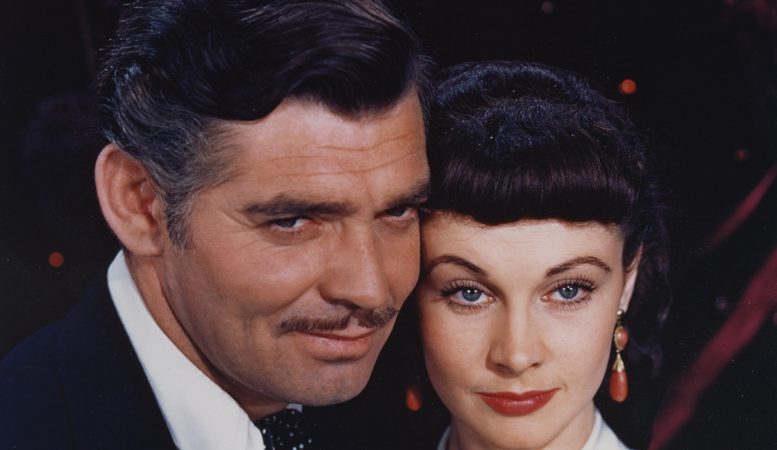

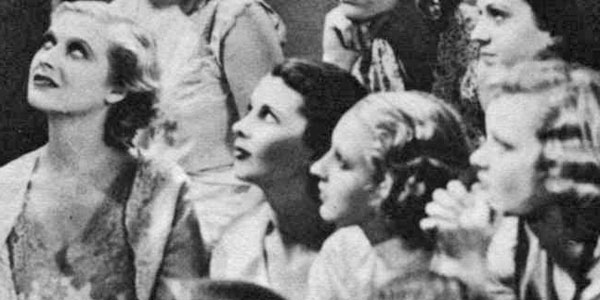
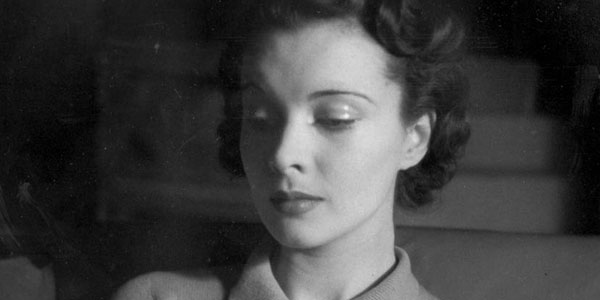
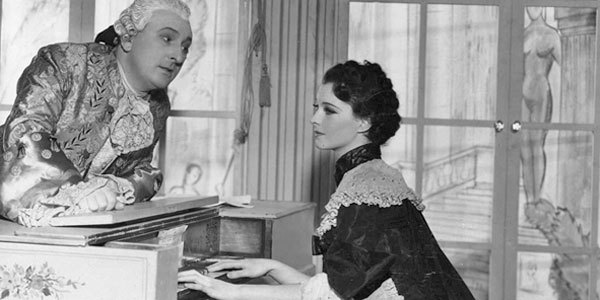
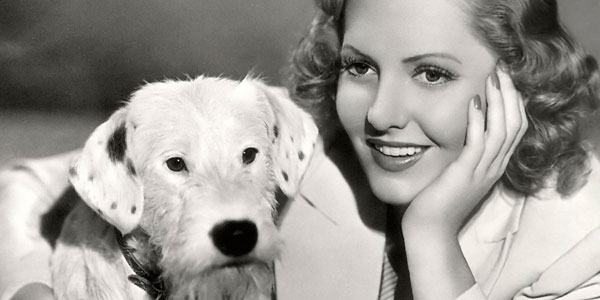
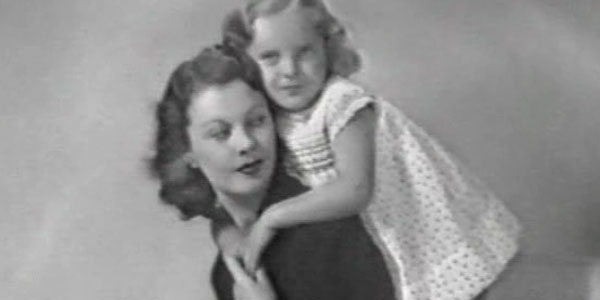
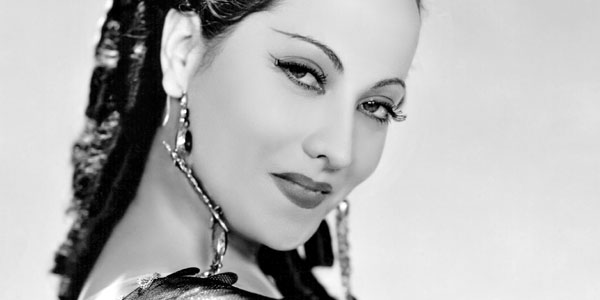
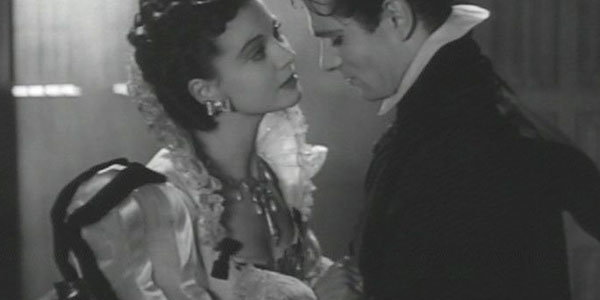
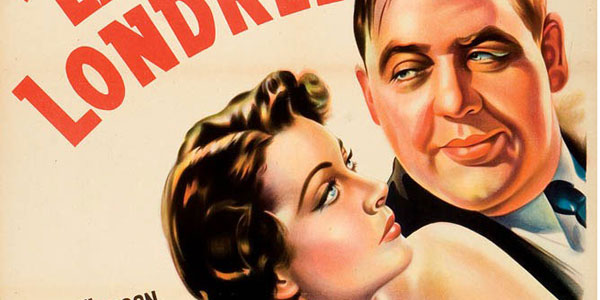
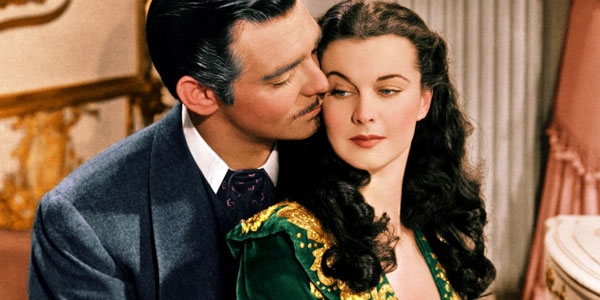
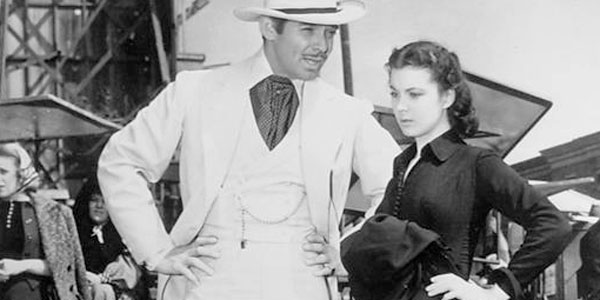
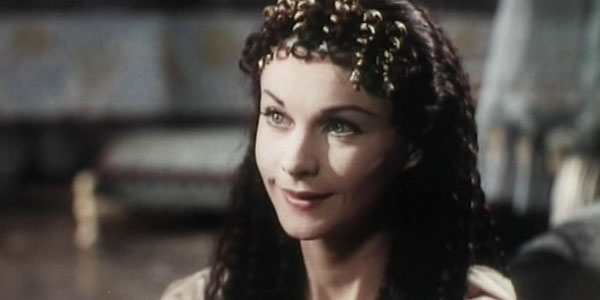
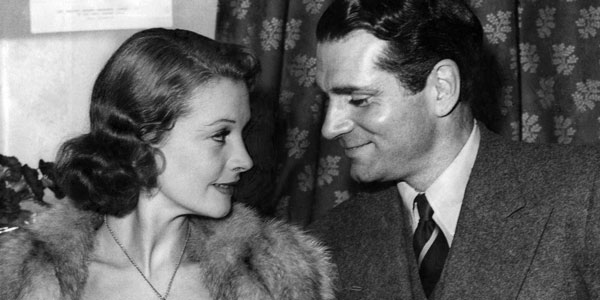
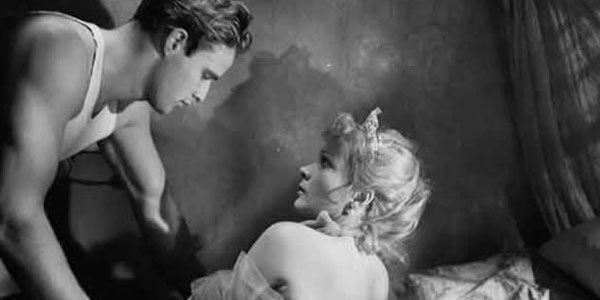
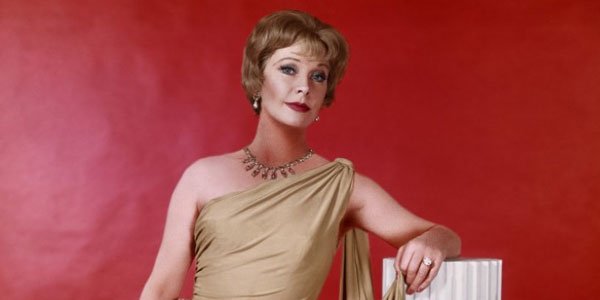
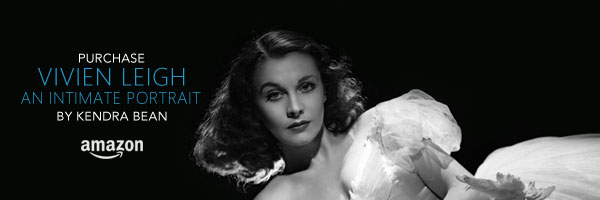


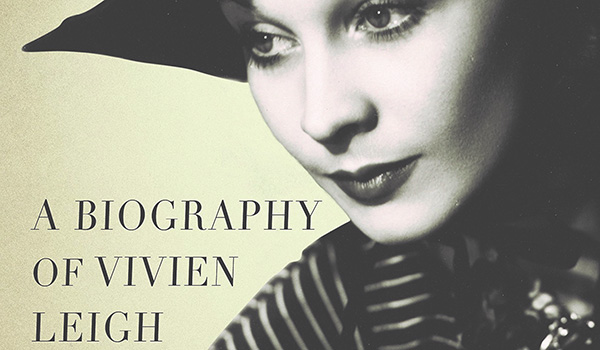

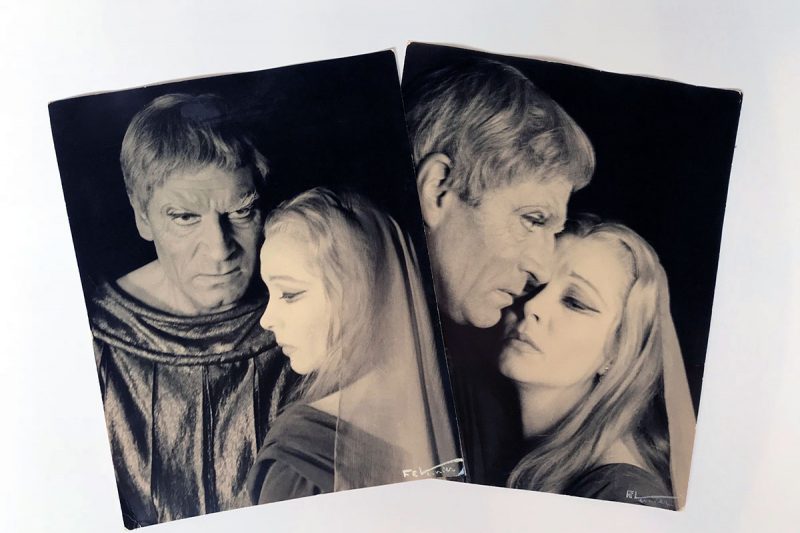
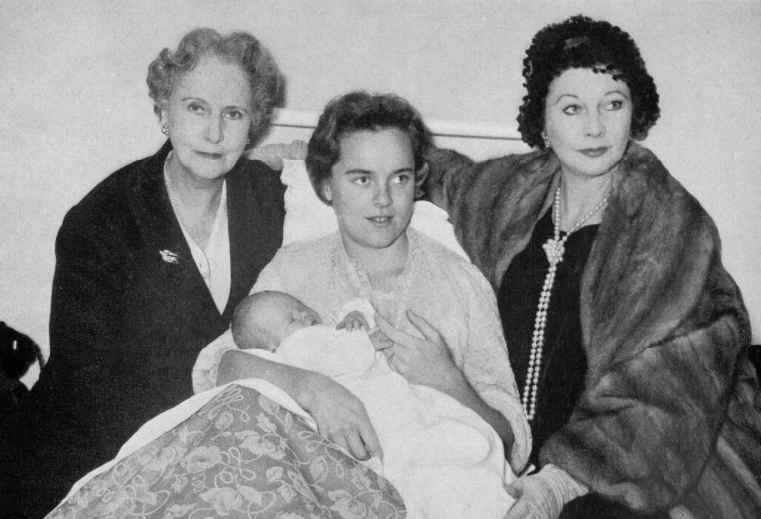
Kendra, this was wonderful. Your writing is so skillful and always such a pleasure to read. I’ve studied everything I could get my hands on about Vivien for over 37 years now, and still you always surprise me with new information and your uncanny ability to make the subject fresh.
By the way, I’ve been meaning to write and ask you … when is the second printing of your book due to be released? I want both editions!
Hope you’re doing well. Thanks for another wonderful post. I really enjoyed it!
DAVID
Thank you, David! It’s so nice to see your comments! The 2nd printing of the book is actually in stores now – or should be, anyway!
Incredible article! Leigh was one of the best ever, I got so attached to her acting that I was literally distraught after Roman Spring of Mrs. Stone, just because of what her character went through – THAT is superb acting. She made me feel for her as an actress having to go through emotional torment onscreen as a character! I’ve never felt that way before, and it’s perhaps the most wonderful performance that I’ll never be able to sit through again. By comparison, I can watch Streetcar almost annually. I believe that until Hilary Swank did it again, Vivien was the only actress to get two Best Actress wins in two nominations. MAJOR KUDOS for your article!
Many thanks to you! I agree that her performance in Roman Spring is quite poignant, in a different but perhaps no less effective way than her performance as Blanche DuBois.